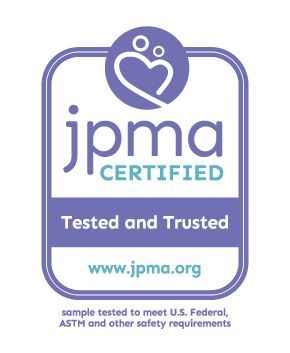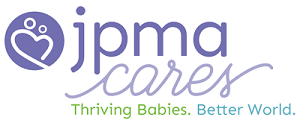Bathroom Safety
Bathing your newborn for the first time can be stressful for you and baby. There are no rules about when or how often a baby needs a bath so let baby be your guide. Have fun! When you are relaxed and having fun, baby is relaxed and having fun. Talking through what you are doing and what’s next can calm you down as well as baby. Take the anxiety out of bath time and make the experience a safe and rewarding one by following these guidelines:
- Collect all necessary bathing materials before bringing baby into the bathroom.
- NEVER leave baby unattended during bath time. If you need to leave the bathroom, take baby with you. Do not rely on older children to watch baby for you.
- Never add water to the tub while baby is in it. Empty the tub completely immediately after each use. A baby can drown in as little as one inch of water.
- Never use a bath seat on textured or non-skid surfaces unless the manufacturer’s instructions specifically state the seat is intended for such surfaces.
- Install no-slip strips on the bottom of the bathtub when not using an additional bathing product, unless otherwise noted by manufacturer's instructions.
- Put a cushioned cover over the water faucet so your child won’t be hurt if they bump their head against it.
- If using a baby bath seat, never lift the product with baby in it and position the bath seat in the tub so baby cannot reach the faucet or spout.
- Bath rings should be used with children who are capable of sitting upright unassisted.
- Always check the water temperature before placing your child in the bath tub or bath seat. To prevent scalding, the hottest temperature at the faucet should be no more than 120 degrees Fahrenheit. In many cases, you can adjust your hot water heater. There are products available to test water temperature, which are also safe for baby to play with.
- When your child is old enough to turn the faucets, teach them to start the cold water before hot.
- Be sure to discontinue use of a product if it is damaged, broken or disassembled.
- If the bath seat moves or tips while your child is in it, discontinue use.
- Get in the habit of closing the toilet lid and get a toilet lid lock. A curious toddler who tries to play in the water can lose their balance and fall in.
- Medical and cleaning products should be kept out of baby’s reach. Childproof safety locks for cabinets are helpful. Learn more about Baby & Child Proofing here.
- Be sure to properly childproof the entire bathroom (not just the bath tub) to ensure an overall safe experience when utilizing all of the facilities.
- Look for the JPMA Certification Seal on bath seats, bath tubs, and bathers.
JPMA Certification Seal
Always look for JPMA Certified products for extra confidence in your choice. JPMA currently certifies more than 2,000 products in 29 product categories, including carriages & strollers. Each certified product is sample tested annually, as well as after any material change, at an independent laboratory to guarantee it meets the highest safety requirements. To confirm a products certification status, look for the JPMA certification seal on your product packaging, or search by product category on JPMA's Certification Directory.

















